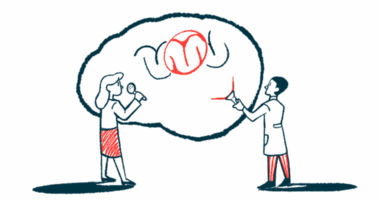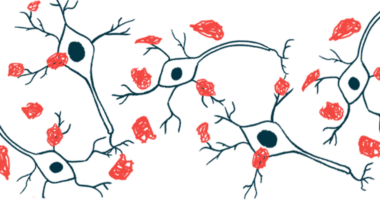Patching the ‘glitches in the matrix’ caused by Parkinson’s disease
Could a new tool help fix the brain’s sensory integration matrix?

Live with Parkinson’s disease long enough and you start to notice patterns — micro-misfires that add up to lost rhythm. A foot hesitates at a doorway. A hand reaches, then forgets what for. The world is the same, but it feels misaligned — as if a few coordinates in reality’s grid shifted when you weren’t looking. Call it a “glitch in the matrix,” but not the sci-fi kind. I mean the brain’s sensory integration matrix: the invisible scaffolding that links what we see, hear, and feel to how we move, think, and decide.
Neuroscience already names pieces of this matrix. Grid cells and place cells map space like an internal GPS; head direction cells keep the compass steady. Some researchers argue that allostasis (how the body maintains homeostasis) is at the core of brain function. Others make the case that sensory hierarchies — the way raw signals are progressively integrated — are anchors of cortical organization.
Together, these ideas paint a brain that is not a centralized radio tower, but rather a distributed, decentralized, dynamic network that weaves many streams into a coherent fabric.
When that weaving frays — when the balance of excitation and inhibition drifts — the matrix glitches. We experience it as tremor, freezing, speech changes, brain fog, the slow erosion of ease. And here is a truth we often skip: For many, Parkinson’s won’t stay in a neat “motor” box. The same instabilities that trouble movement can spill into cognition. “PD” might as well foreshadow “Pre-Dementia.” That’s not to alarm; it’s to focus our aim, which is protecting the brain’s coordination, prediction, and connection.
So what if our therapeutic interface has been pointing the wrong way? Deep brain stimulation and other noninvasive brain stimulation target central nodes — these are powerful tools, and life-changing for many. But they are fundamentally centralized and focused. The brain, by contrast, is a multidirectional mesh. Communication loops run from the outside in and the inside out — from skin to thalamus to cortex to basal ganglia and back again. If the matrix is distributed, shouldn’t some of our interventions be, too?
Here’s the proposition we’re testing at Brain Storm Studios: modulate the matrix’s coordinates from the outside in, using precisely sequenced peripheral stimuli — visual, auditory, haptic — delivered in context, with rhythm and variation, over weeks and months. Not random buzzes and flashes, but structured patterns that nudge the system away from pathological synchrony and toward flexible, adaptive dynamics. Think of it like tuning a live orchestra by giving better cues to the percussion and strings rather than replacing the conductor.
The math exists. Scientists have modeled “winnerless competition” — systems that don’t freeze into rigid attractors, but cycle through semi-stable states along “heteroclinic channels.” Translated: Healthy brain function is sequenced variability — coordinated transitions that never get stuck. Parkinson’s and many sensory processing-related disorders (including dementia) look like the opposite: overstabilized states with too much lock-in. If we can train flexible capacity — repeating or switching those heteroclinic sequences — we may recover resilience not by forcing a target frequency but by restoring the choreography.
This perspective gives us a tractable interface. We can measure how brain-body connections change when we deliver patterns at different scales. We can observe beta-band relative power in addition to gait, balance, working memory, speech prosody, motivation, and sleep as dependent variables — outcomes that matter in real life. We don’t need to know the hidden alchemy that converts a patterned beat into a better step on Tuesday afternoon. We just need the orchestration to produce consistent improvements. If it feels a bit like magic, fine — stagecraft is allowed if the audience stands up with less effort.
Participation welcome
Here’s our open invitation. Brain Storm engineers are building an Apple Vision Pro-ready virtual reality app that’s open-source and configurable, paired with custom haptic gloves. The app delivers multisensory sequences you can adjust like a modular synthesizer: tempo, spatialization, amplitude, duty cycles, burst patterns, cross-modal offsets, and more. What we need now is help with “next-gen sequencing” — not DNA, but dynamics. We’re looking for partners in forecasting and predictive modeling to optimize parameters for pilot testing.
If your toolkit includes control theory, dynamical systems, and signal processing, if you’re a clinician curious about protocol design and outcome measures, if you’re a person with Parkinson’s (or a caregiver) who wants to shape what “usable at home” means, please join us. We need your eyes on the instruments and your hands on the dials.
Parkinson’s may be a glitch in the matrix, but glitches are fixable when you can reach the right coordinates. The grid and place cells will still do their quiet work; our job is to feed the system cues it can use to restore movement, attention, mood, and memory through better sequencing of sensation. Let’s meet the brain on its own terms: with patterns, context, and temporal depth.
Send your ideas, critiques, or “have you tried this?” notes. If you’re interested in collaborating on pilot protocols, analytics, or device integration, raise your hand. The code will be open. The goal is shared. And the next patch to the matrix might be the one that helps someone stand, walk, remember, and smile — in the near future.
Note: Parkinson’s News Today is strictly a news and information website about the disease. It does not provide medical advice, diagnosis, or treatment. This content is not intended to be a substitute for professional medical advice, diagnosis, or treatment. Always seek the advice of your physician or another qualified health provider with any questions you may have regarding a medical condition. Never disregard professional medical advice or delay in seeking it because of something you have read on this website. The opinions expressed in this column are not those of Parkinson’s News Today or its parent company, Bionews, and are intended to spark discussion about issues pertaining to Parkinson’s disease.








JimElyce Janssen
I would be interested in learning more as I have Parkinson’s
sandi silagi
How do we raise our hand! I am a movement specialist. I have a boutique wellness fitness studio, a few clients with PD and certification in Rock Steady Boxing and a history in dance.
I do not have PD. I have an interest in working with clients with PD. As a small business, I can't afford the cost of missed or late show appointments. Clients can't afford the cost of paying for the services they can't get to. So, my work with PD is mostly volunteer, sometimes on my own and sometimes through the local senior center.
One of my clients currently that is doing well is also taking singing classes and ballroom dancing. In our sessions we use MELT Method to calm the nervous system and to connect and re-pattern the response system.
Another client has found success and been able to continue to make jewelry by consistently in attending spin classes.
Another just could not get his medications organized to have energy to do anything consistently. We have lost touch.
Those are a few examples. Helpful information..maybe.
Is there something I can support your research in? Let me know if you are interested in connecting. I do a lot of my work online with zoom. I can work with anyone anywhere!
Sandi